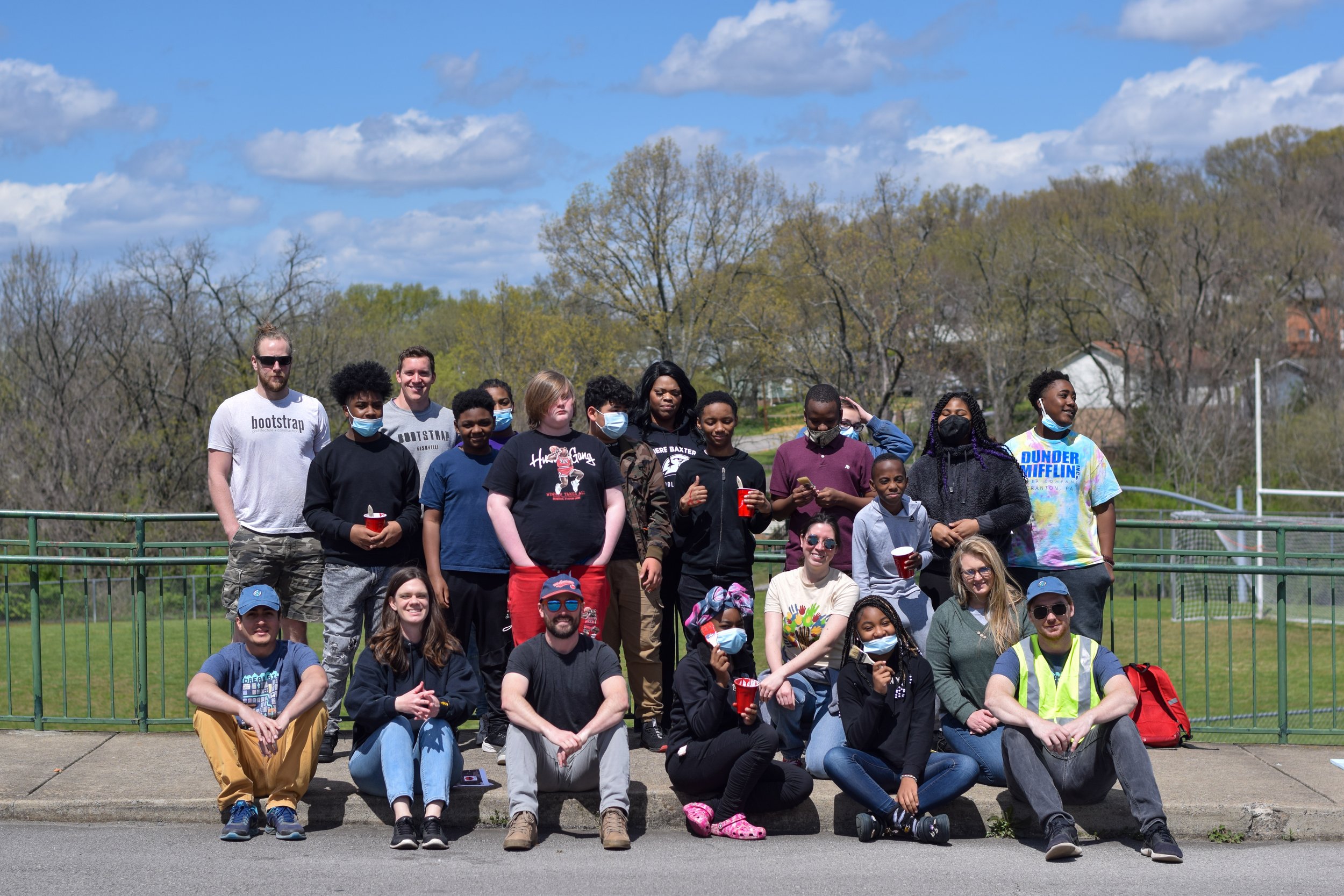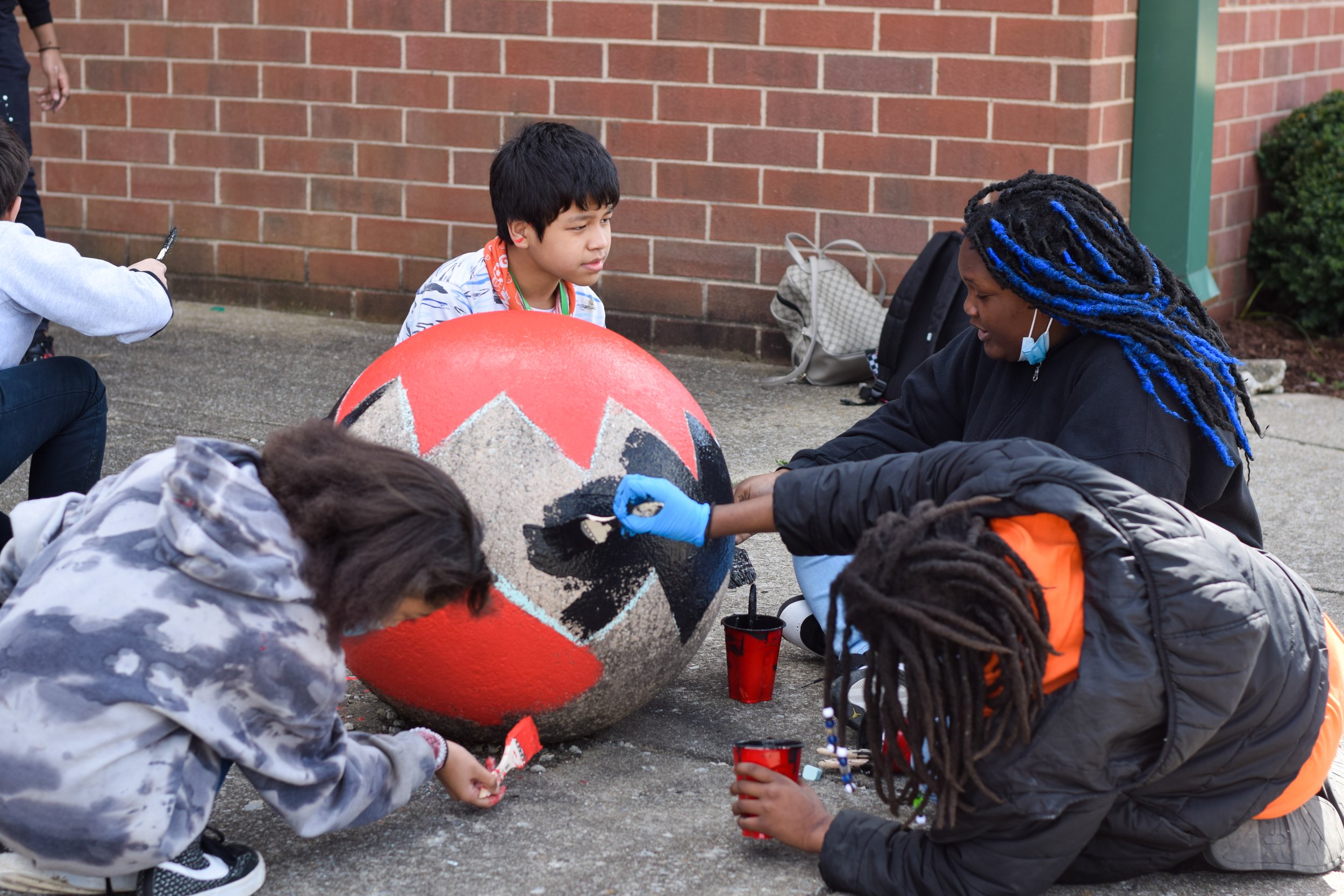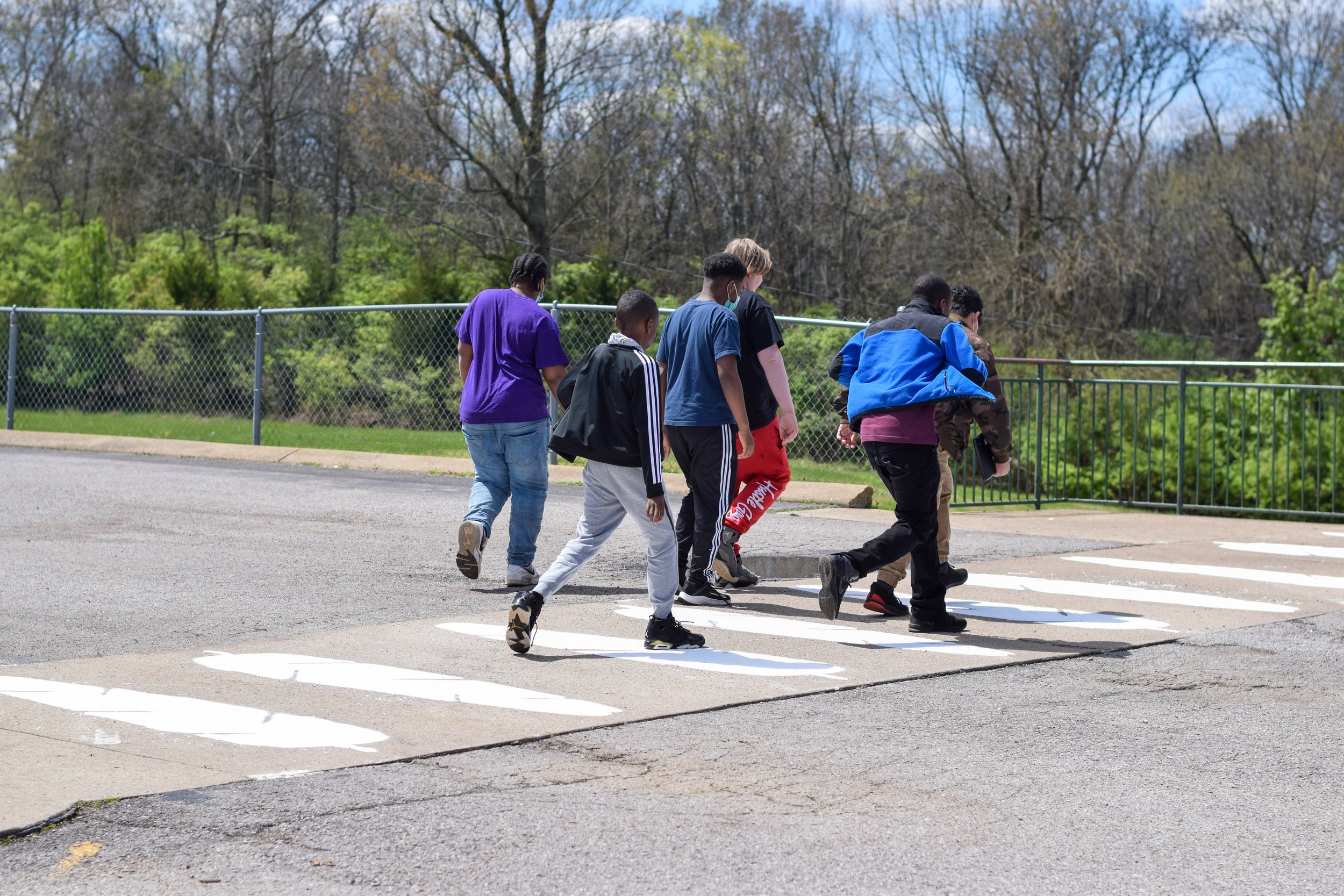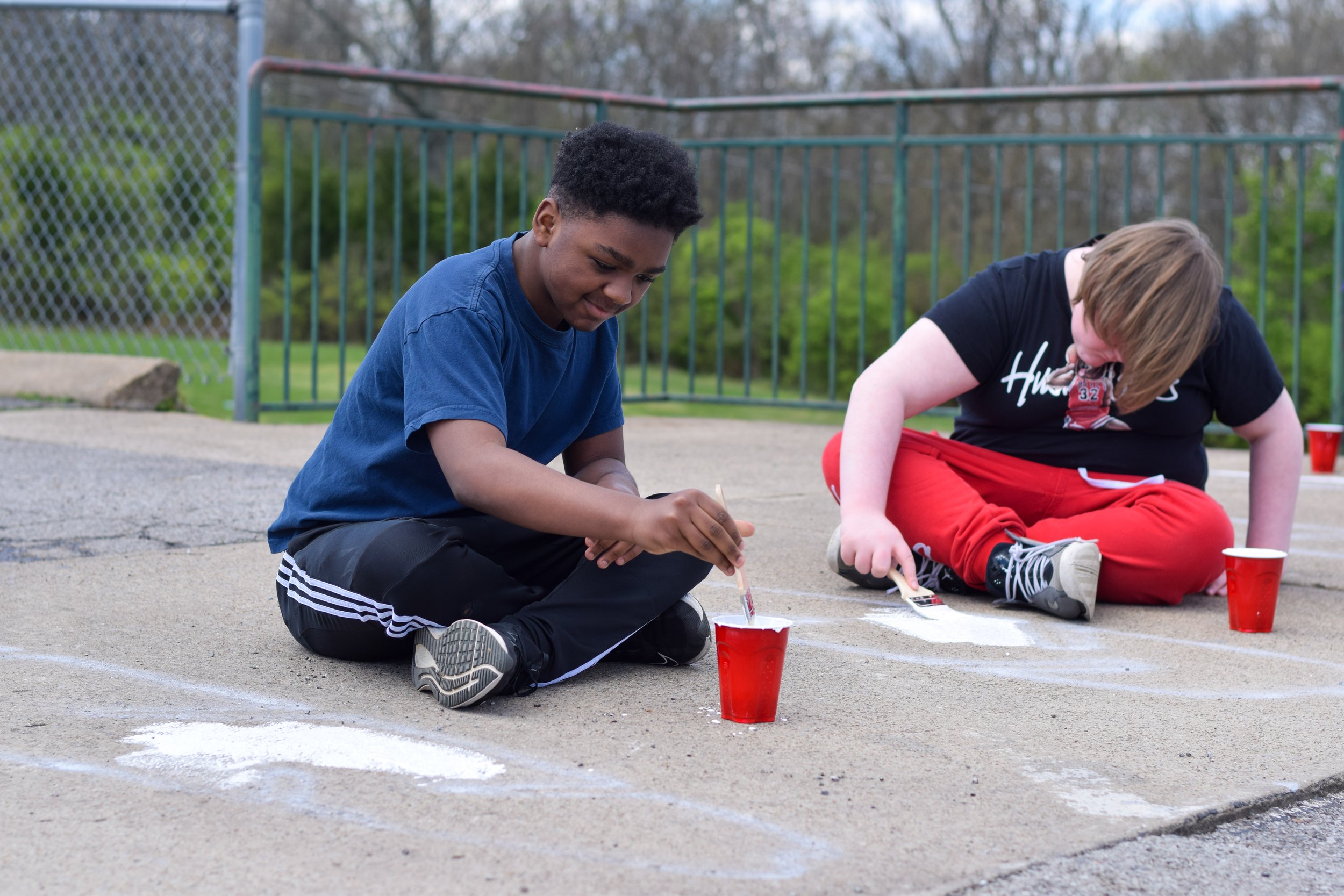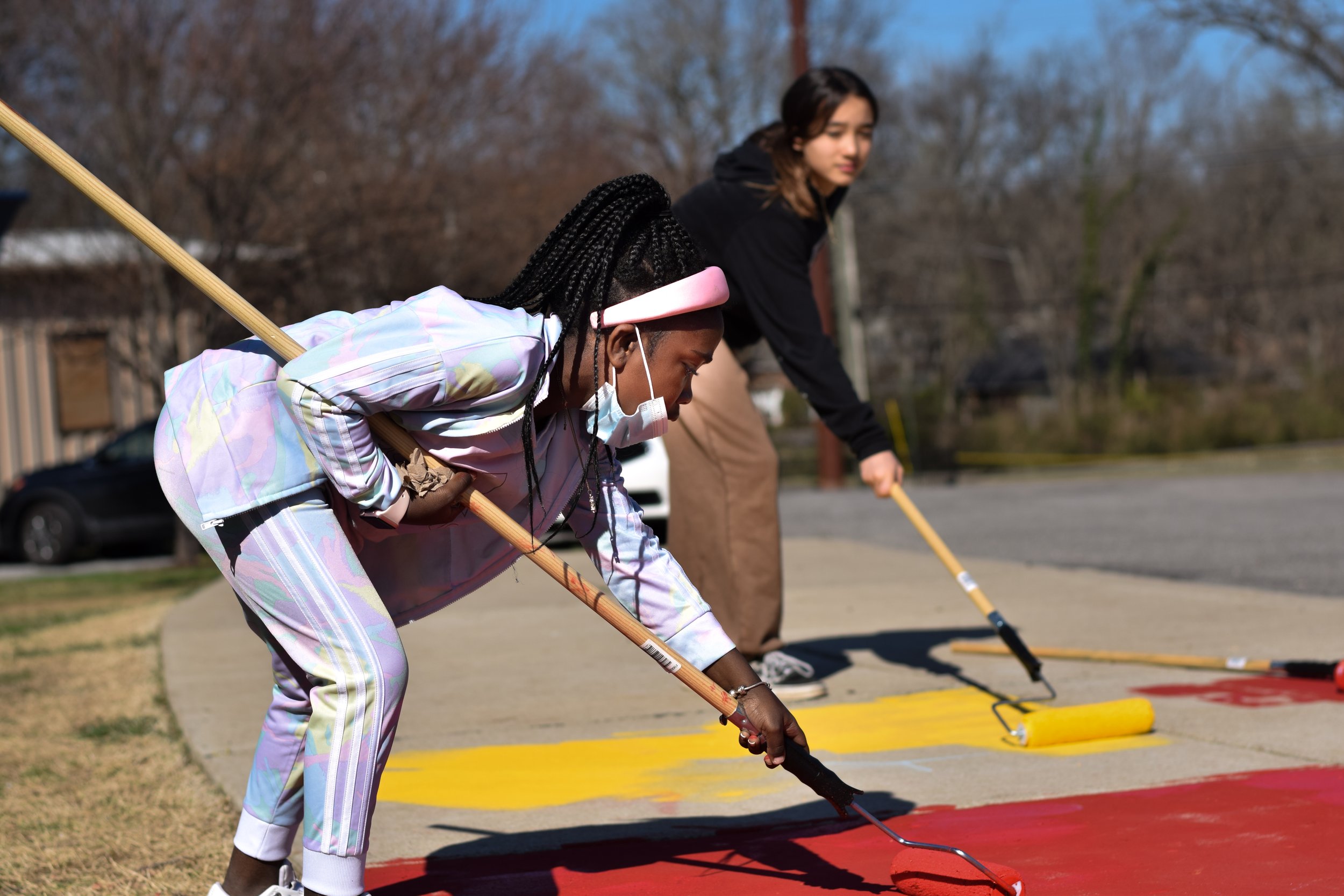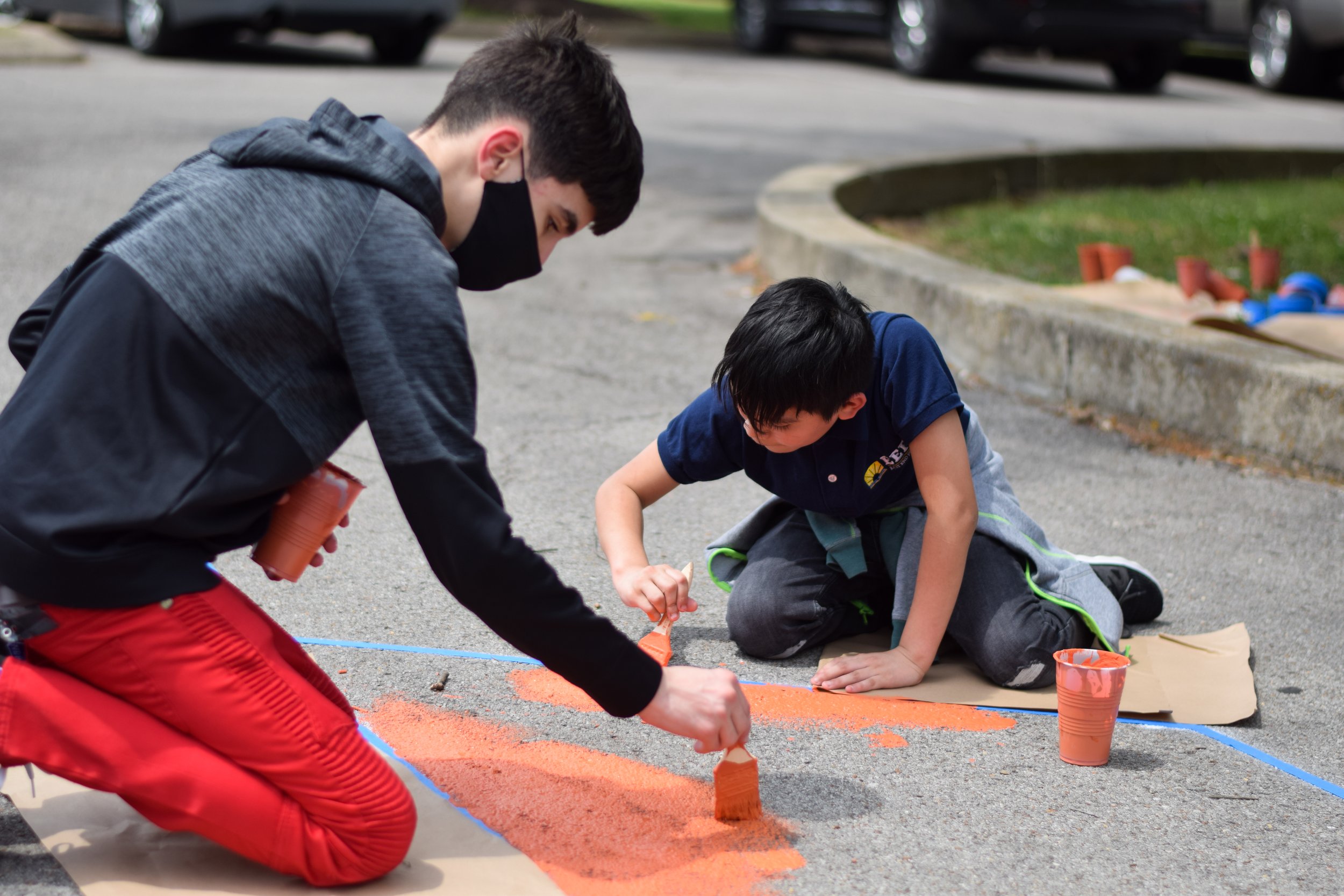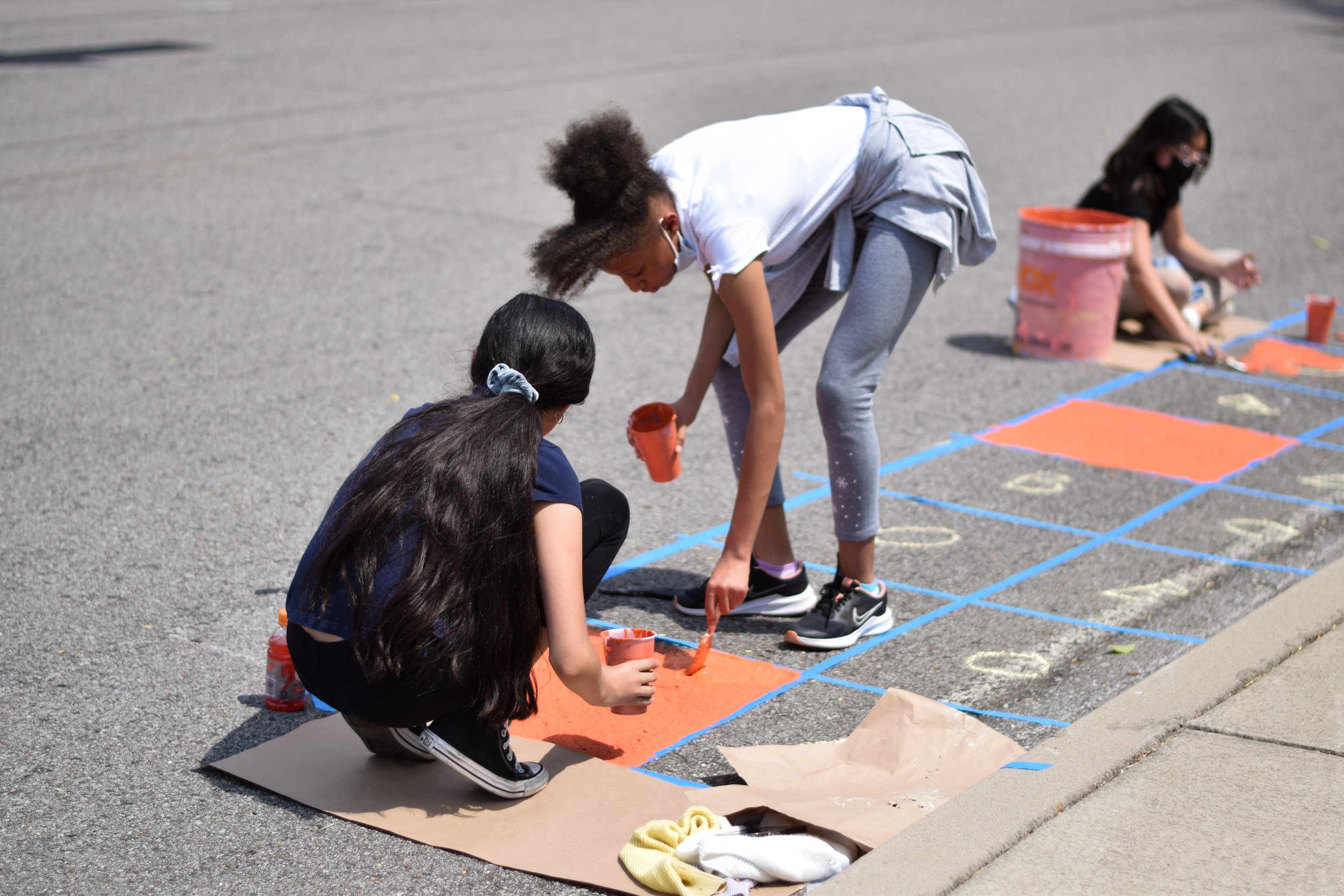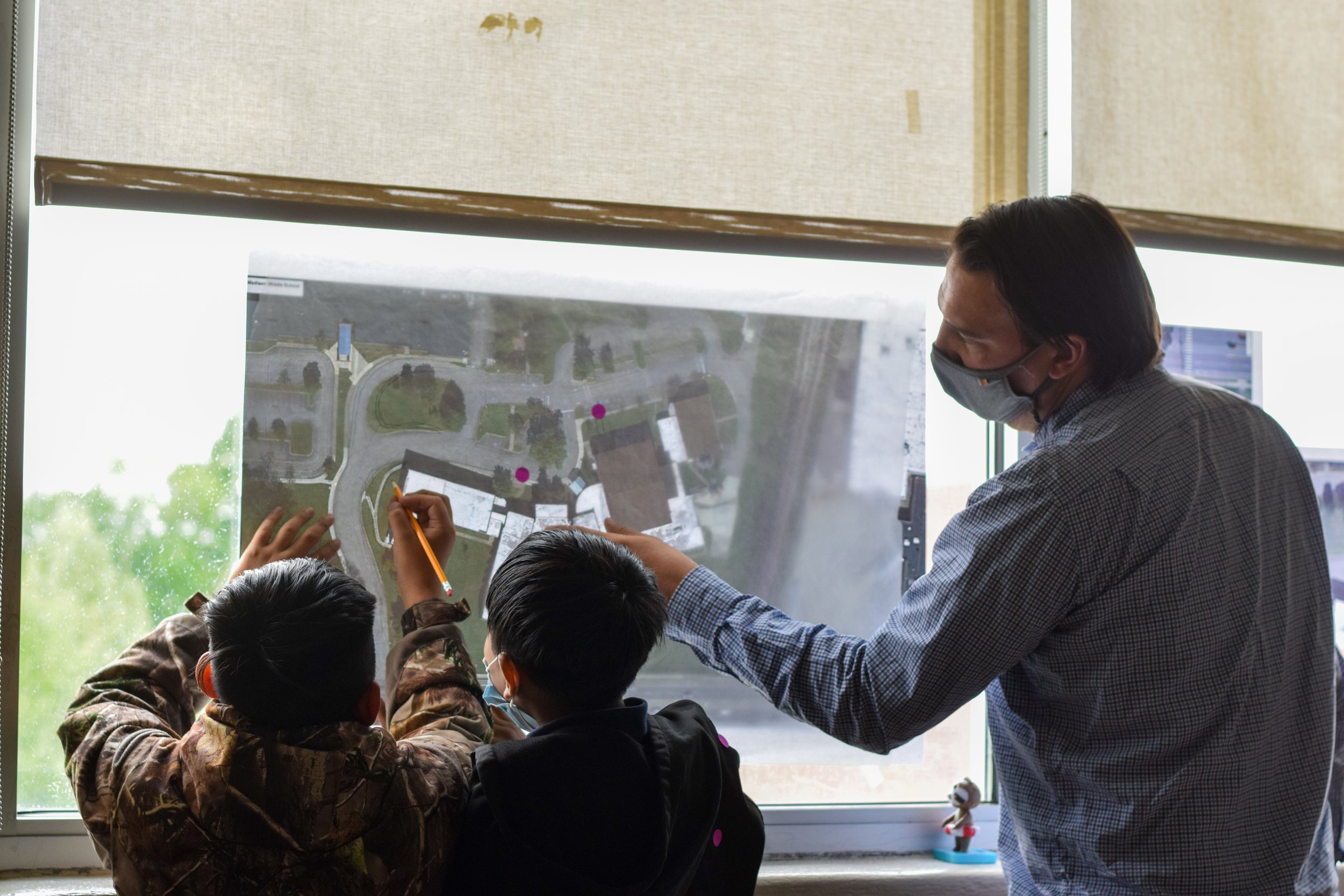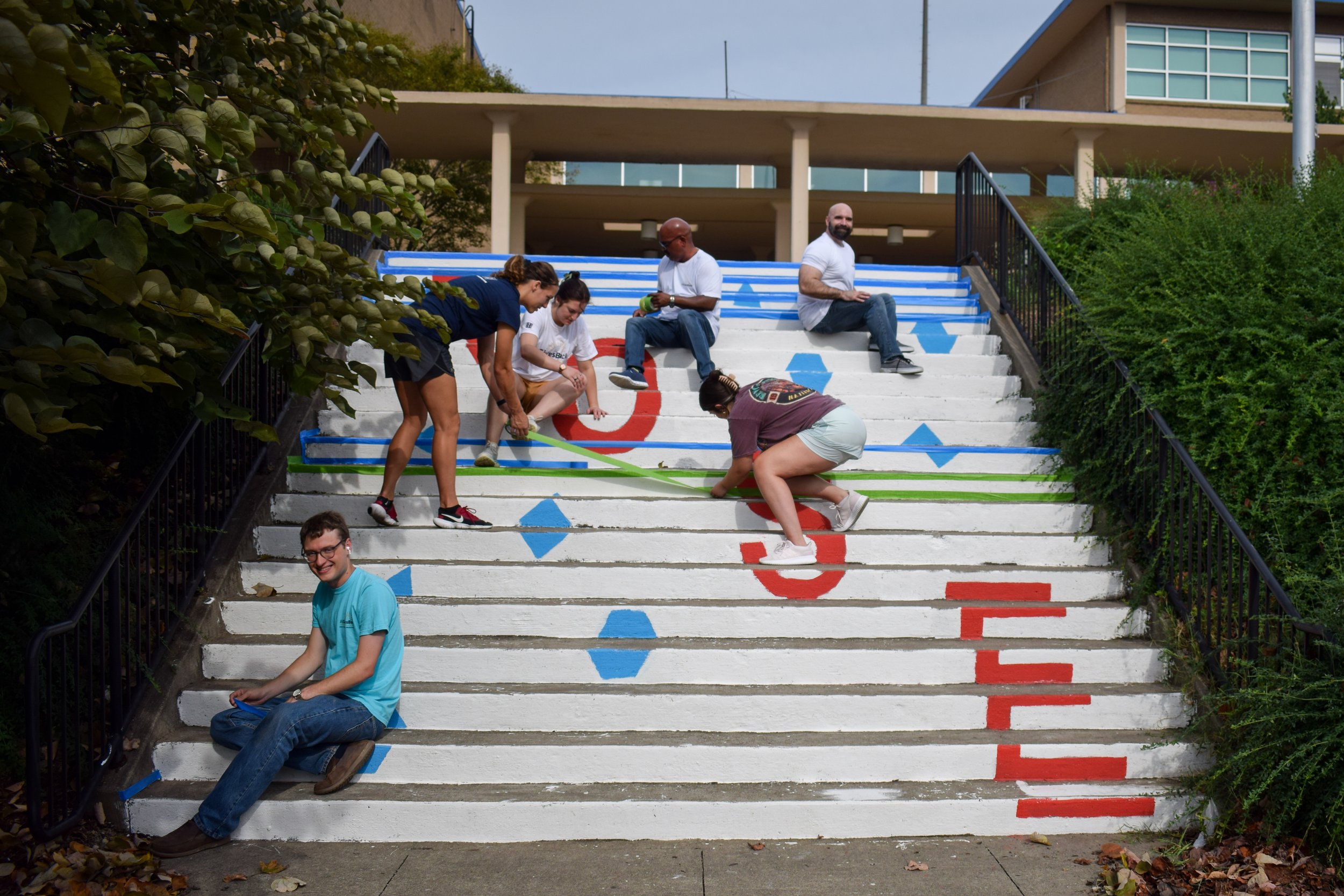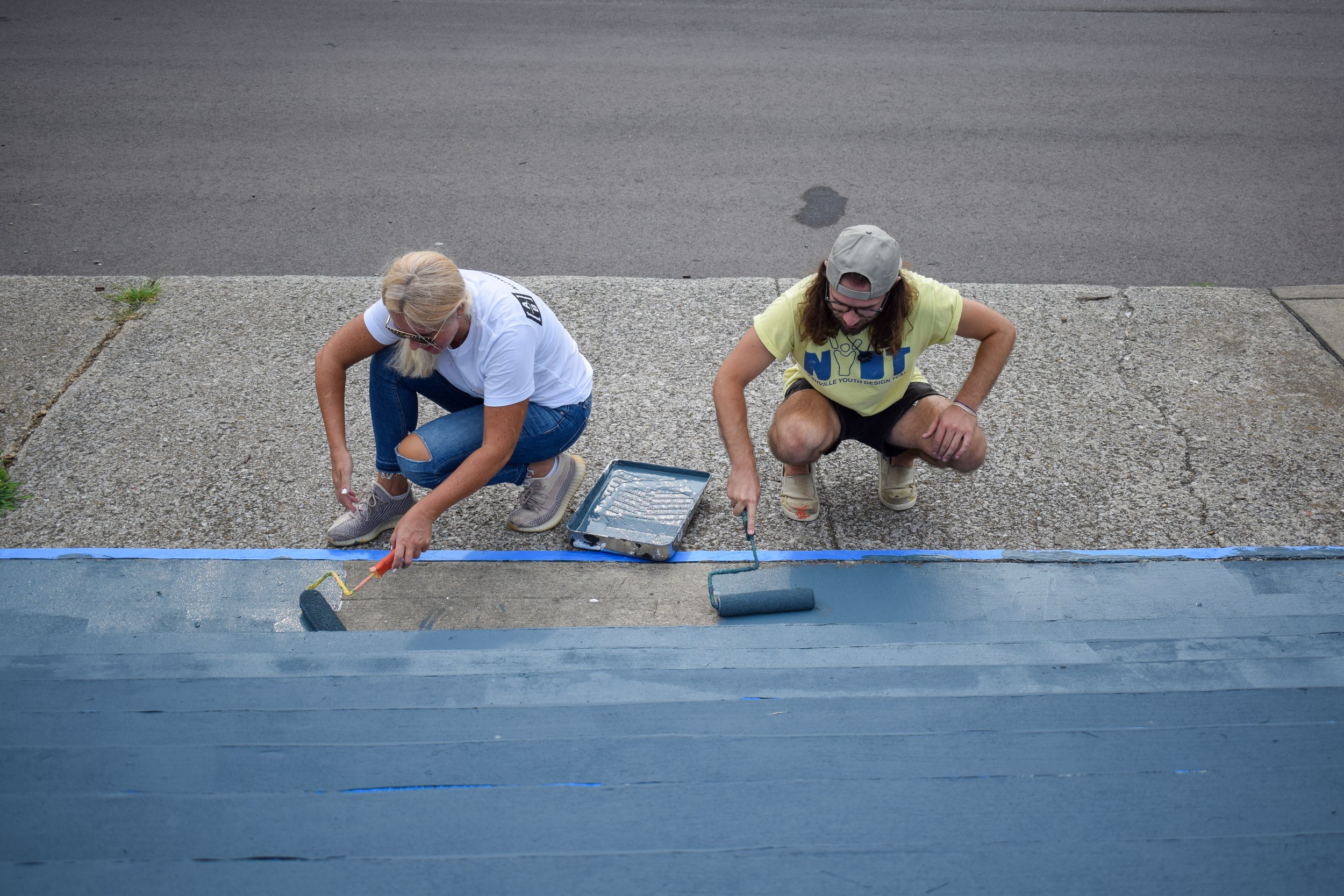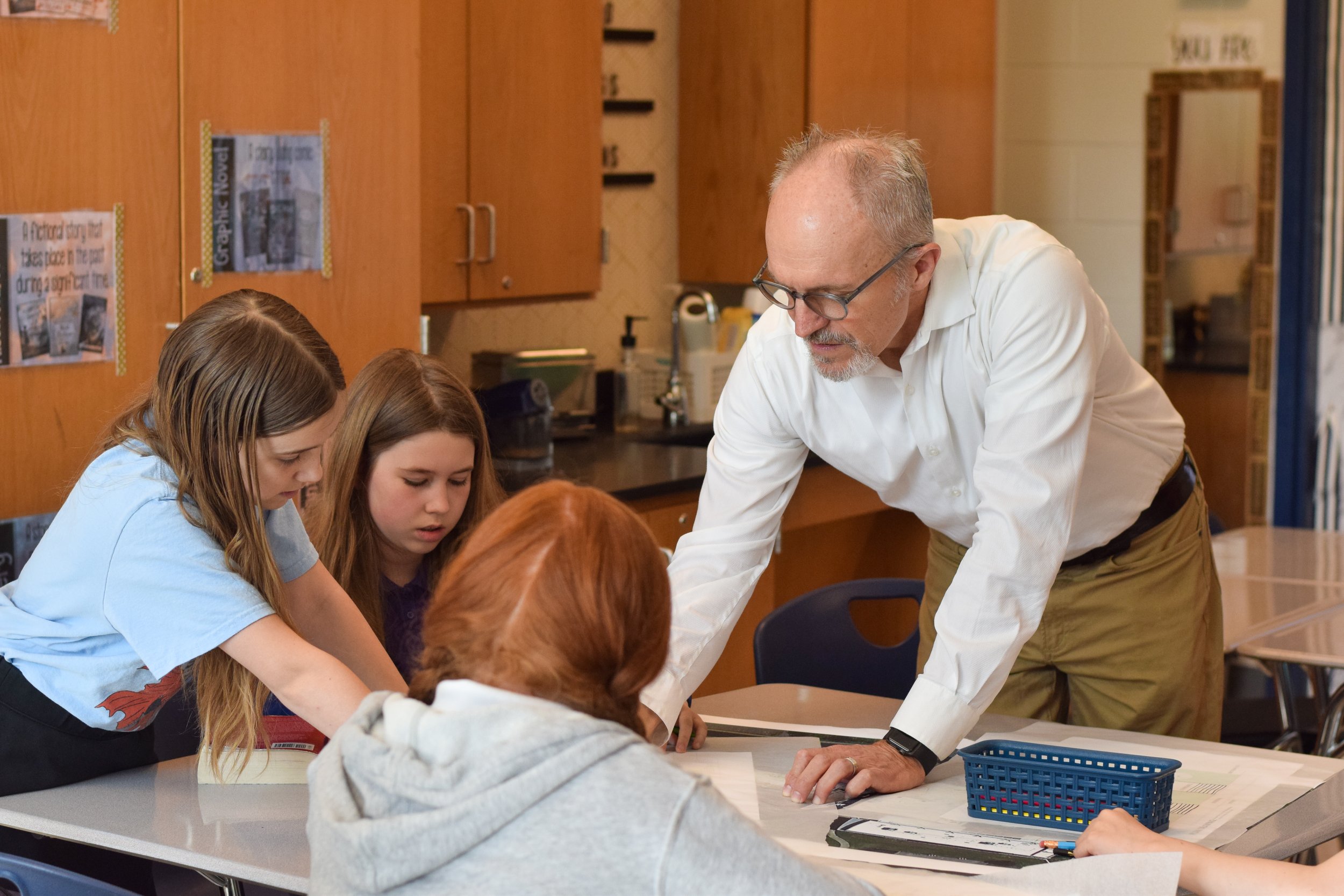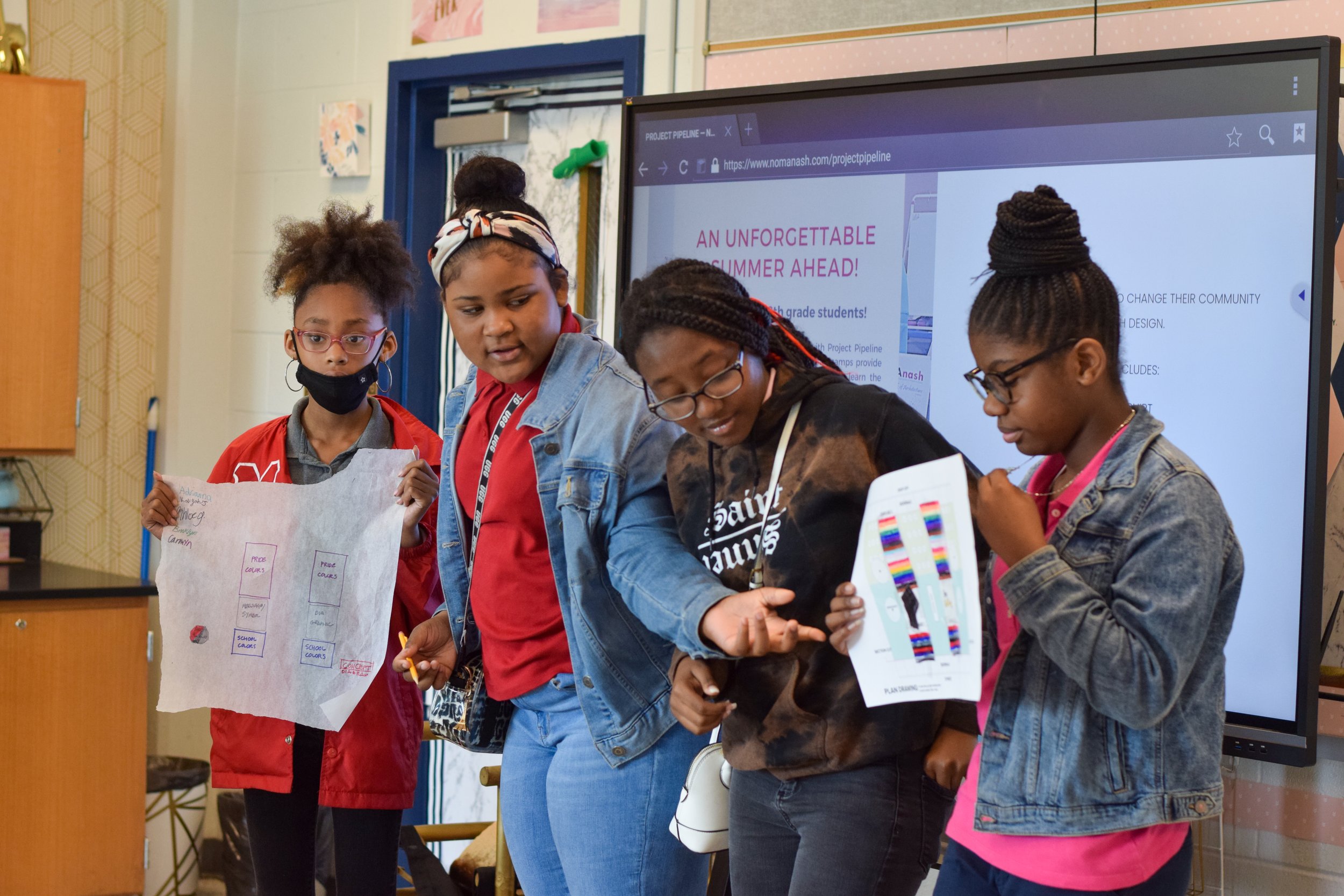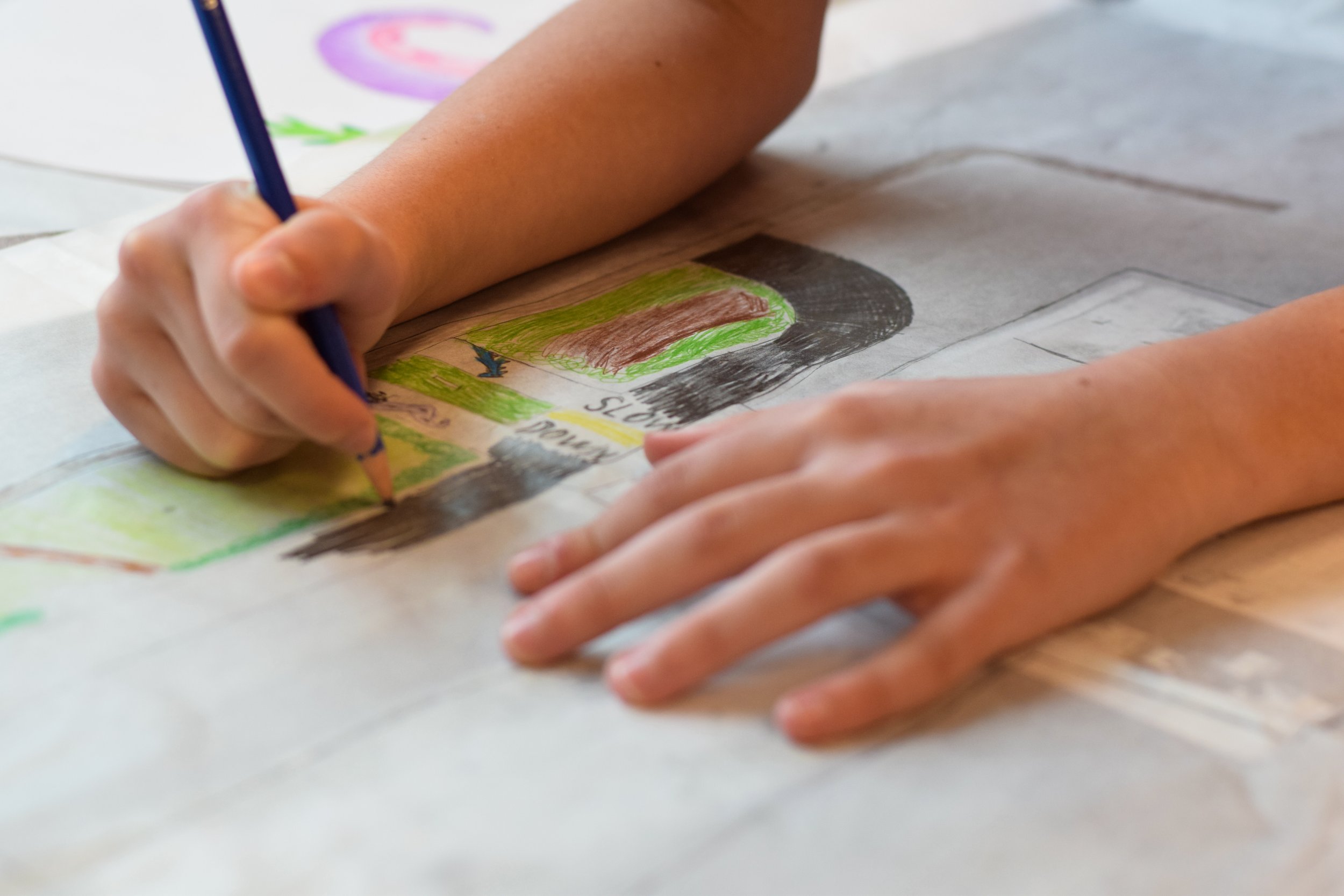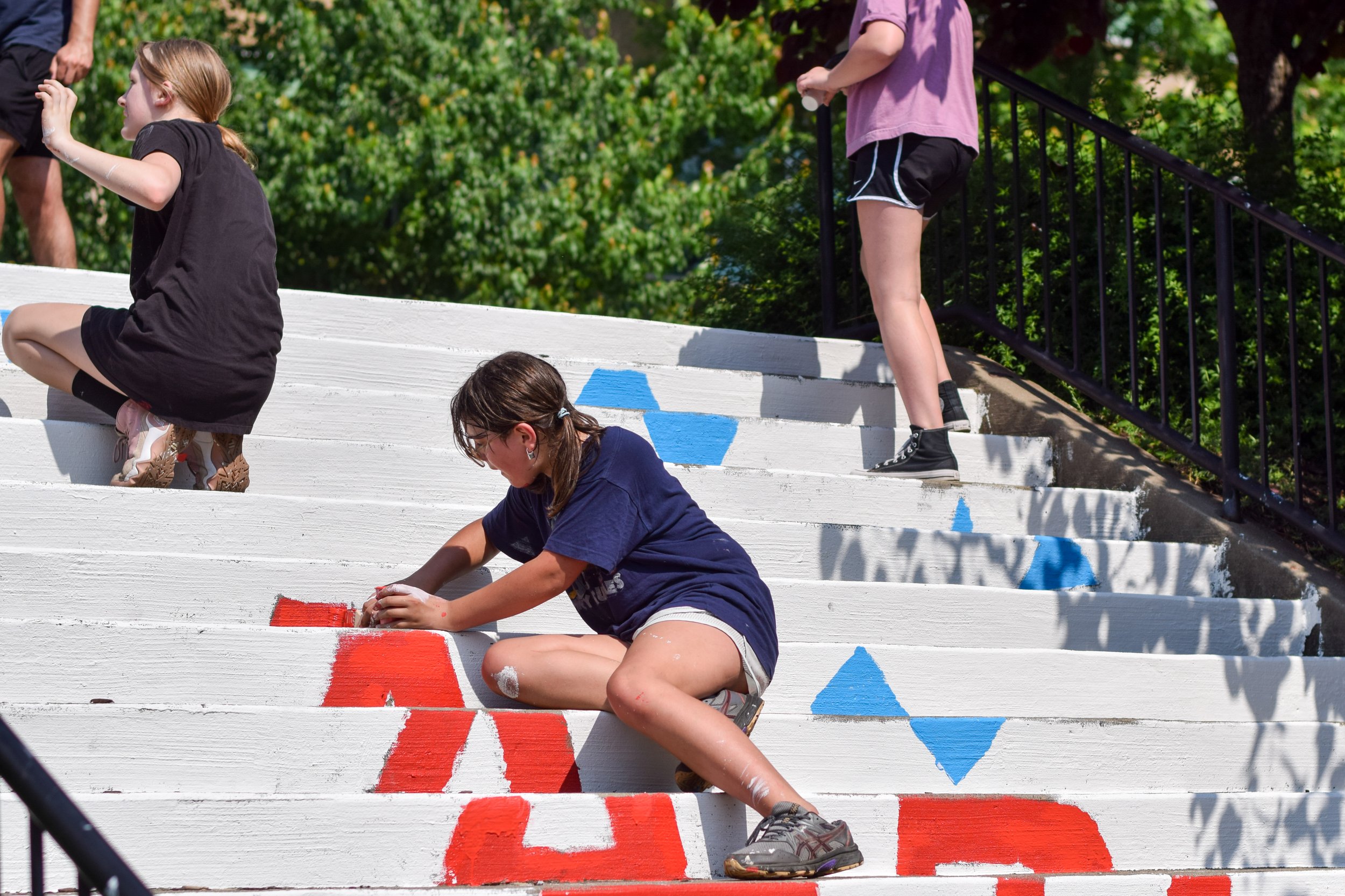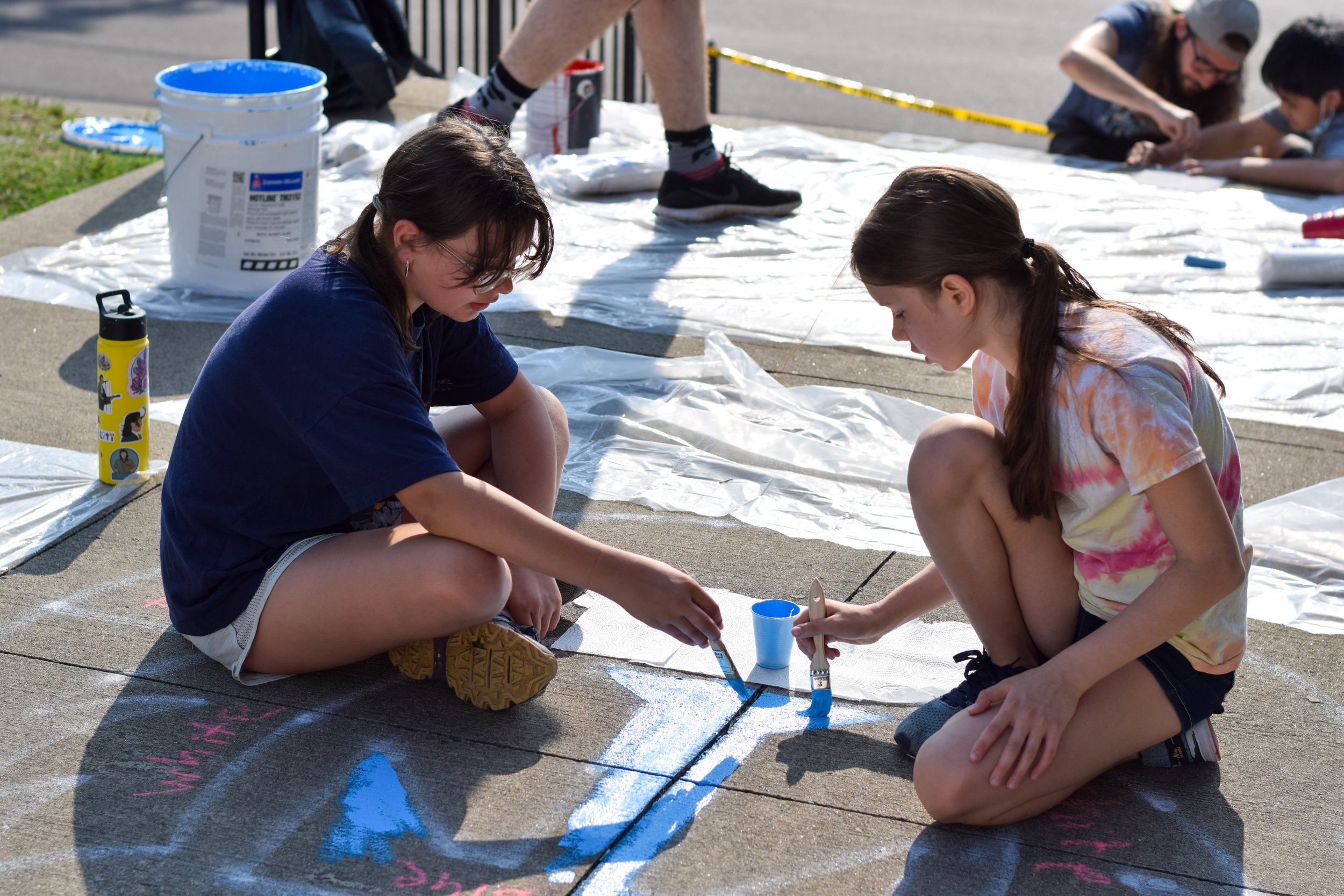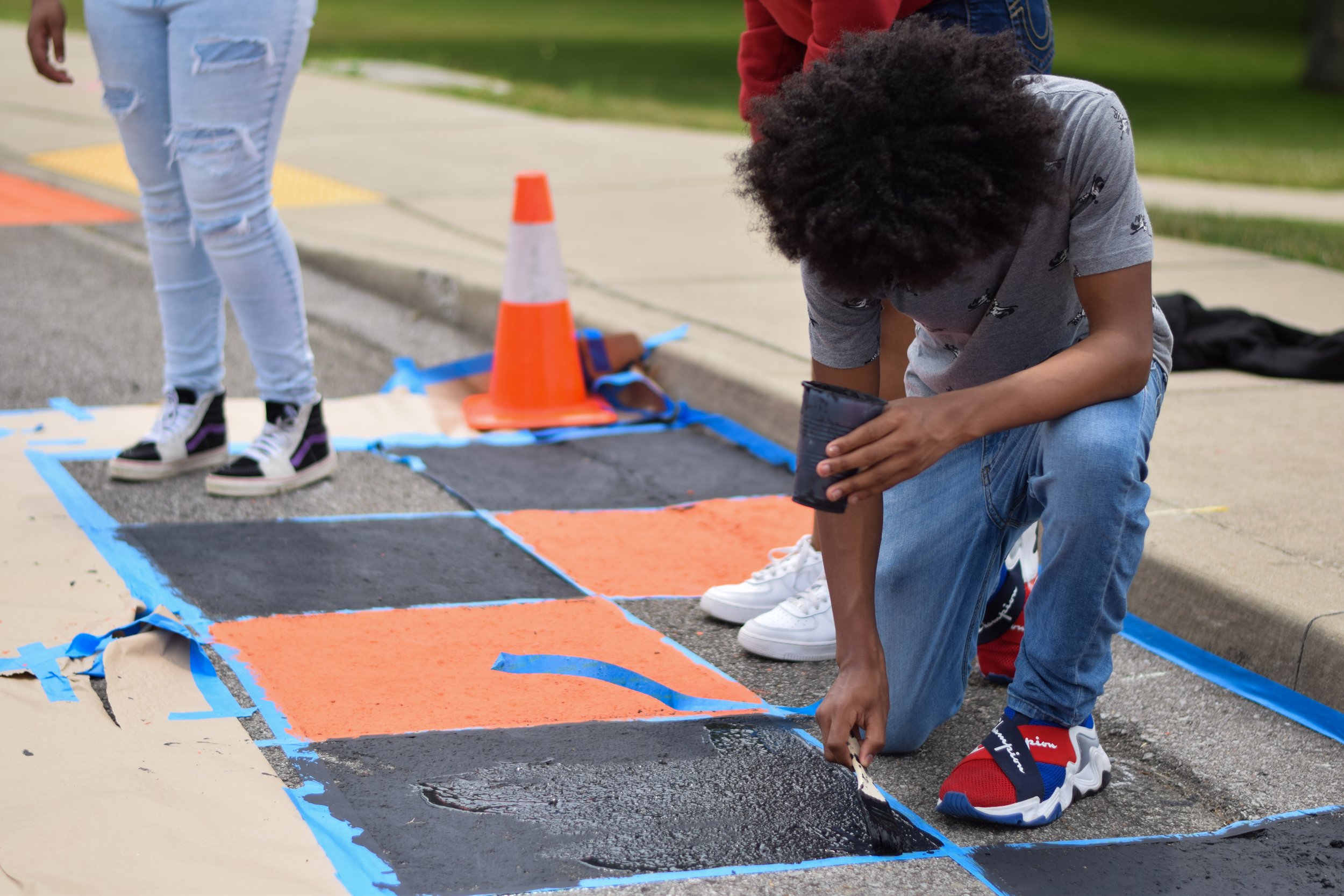Posing a Paint Challenge
By Veronica Foster, Communications + Advocacy Manager
3 min read Learn more about Design Your Neighborhood’s sustainable transportation paint challenge, and the 4 successful installations designed and painted by Nashville middle school students!
This past Spring, Design Your Neighborhood took middle school students outside the classroom to make their mark on their school campuses. This came alive as the Sustainable Transportation Paint Challenge within our STEAM Science curriculum at 4 schools: Jere Baxter, JT Moore, Madison Middle, and Rose Park Magnet. During the Big Payback, we raised $4,356 grassroots funds to go towards materials. In addition to grassroots funds, we had the generous financial support of AllianceBernstein, 3M, Greater Nashville Regional Council, HCA Healthcare Foundation, and Tennessee Architecture Foundation. DPR Construction also donated much needed paint supplies.
Teachers Are Enthusiastic About Tactile Learning
The energy around this project was extremely enthusiastic from the start. When Melody Gibson, Education Director, presented the curriculum idea to various teachers, they were very supportive of getting students to not only think more deeply about sustainable transportation, like walking, biking, and transit, but also to simply get students to have the tactile experience of creating something that would make a visible difference for their schools.
The project directive for the students was to first identify specific issues that their school campus encounters when it comes to walking, biking, and transit. We then asked them to consider ways that painting on the streets and sidewalks could improve the experience for youth using those forms of sustainable transportation.
We knew this would be a much bigger project than other Design Your Neighborhood curriculum in previous years. It not only required enthusiasm from teachers, but also approval from school administrators to allow their students complete creative freedom to physically paint their designs on campus. It was critical that the result of the paint challenge was entirely youth-led! It also required a lot of materials. We used almost 80 gallons of paint!
Finished Madison Middle crosswalk
Students paint Madison Middle checkerboard bike lane
Once all of our materials were acquired, we set dates with our teachers to start teaching the curriculum. The teachers’ job was to introduce the background knowledge to their students. Before our Design Your Neighborhood team arrived, the students studied fossil fuel impact on the environment, and how personal vehicles on their campuses contributed to that negative impact. Most Nashville middle schools host a long line of parent vehicles that sit idling for many minutes before their child actually gets in the car. The students then learned about why walking, biking, and taking the bus made for more sustainable transportation. They also learned about different types of solutions, like traffic calming and placemaking interventions.
JT Moore student explains an idea to the class
The following day, our team asked the question, how can we make walking and biking easier and safer on campus? Across all schools, the students identified one major issue in particular—wayfinding. Many campuses didn’t have formal bus, car, or bike lanes, nor any designated crosswalks. While students were very vocal about their ideas for paint interventions, we recruited industry experts to help express their ideas on paper. For one school, we had an artist come to lead ideation. For other schools, we had architects and designers from various firms who helped the youth with drawing techniques rather than explaining what their interventions should be. Ultimately, there were several groups at each school that developed their own ideas, and they each had to present their concepts to the class. Thereafter, the students voted on the idea they wanted to implement.
Rose Park students explains their idea to a Tuck-Hinton volunteer
It was clear that the youth quickly developed an appreciation and an urgency around celebrating sustainable transportation. They knew that the challenge wasn’t about making their school look better, but it was about solving an issue and using placemaking to represent the school’s identity. Once a winner (or multiple winners) was selected at each school, our Design Studio recreated the students’ designs in a digital format, so we could create large format stencils that made it easier for the students to paint their vision in real life.
BOOTSTRAP volunteer works with Jere Baxter students to paint their wayfinding signs
We had some really great placemaking and transportation improvements added to the school campuses that were completely youth-led. The students were able to ideate everything, problem-solve, and create the solutions. We couldn’t have done it without the support from the schools, teachers, and our amazing volunteers from AllianceBernstein, Smith Gee Studio, Tuck-Hinton Architects, Cumberland River Compact, 3M, Bootstrap Architecture, CBI, and Vanderbilt University.
